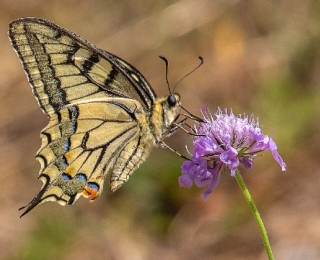Funding and Co-Financing
Co-Financing of Ecosystem and Insect Monitoring
One of the Centre’s key responsibilities is the coordination and co-financing of new monitoring programmes, which are implemented by the federal states. The co-financing of these programmes addresses central areas of action outlined in the Centre’s principle concept:
- Advancing nationwide biodiversity monitoring
- Making data and information accessible and available
- Developing improved monitoring and evaluation methods
- Promoting collaboration and knowledge transfer
The Centre’s committes have selected Ecosystem Monitoring and Insect Monitoring as the first programmes to receive co-financing from the federal government.
Ecosystem Monitoring was developed by the Federal Agency for Nature Conservation (BfN) as part of research and development projects. It systematically, repeatedly, and comprehensively records data on the condition and changes of habitats on sample plots that are representative at the national level. This approach makes it possible to specifically track changes across a broad range of habitat types – from salt meadows and raised bogs to bramble thickets and beech forests.
The nationwide Insect Monitoring programme aims to monitor both common and rare insect species in Germany in a standardised, systematic, and regular manner. These monitorings provide nationally valid insights into the status and trends of insect populations. They form the basis for further analyses – such as assessing the large-scale effectiveness of measures and programmes aimed at insect conservation.
The co-financing of these monitoring programmes is based on administrative agreements between the federal government and the federal states.

Current Status and Outlook
On 23 August 2024, the administrative agreement between the federal government and the federal states for the joint funding of the nationwide Ecosystem Monitoring programme was adopted. While the first federal states are joining this agreement, intensive efforts are underway to establish the Insect Monitoring programme. The Federal Agency for Nature Conservation (BfN) is currently developing the technical basis for its implementation. Initially, the Insect Monitoring will focus on butterflies and grasshoppers, with the option to expand the programme in the future. Coordination on a first draft of the administrative agreement for the Insect Monitoring is planned for spring 2025, aiming for its timely adoption.
Support for Flagship Projects
The Monitoring Centre also provides financial support for nationwide citizen science-based monitoring projects, known as "flagship projects". Through this funding, it contributes to the further development of nationwide biodiversity monitoring and helps to strengthen public engagement in biodiversity conservation.
Conditions for Funding
Flagship projects must meet the following conditions:
Projects must pursue a citizen science approach that actively encourages public engagement in biodiversity conservation. This may include generating knowledge on species distribution, abundance and/or threat levels, and providing a foundation for conservation measures.
The projects are very popular within the population and/or the relevant community. They therefore have an impact and act as a role model for other monitoring programmes and projects.
Projects represent an important component of nationwide biodiversity monitoring – for example, by closing data gaps in the monitoring, providing the data basis for reporting obligations, or supporting species conservation programmes.
Projects are designed to further develop monitoring approaches in a targeted way. In addition, the application must already demonstrate how the continuation and long-term sustainability of the project or programme will be ensured beyond the initial funding period.
Outlook on Future Project Funding
Looking ahead, the Monitoring Centre plans to support additional research projects aimed at driving innovation and advancing biodiversity monitoring.
The following funding priorities are currently under consideration:
- New technologies and methods for biodiversity monitoring programmes
- Strengthening and integrating volunteer work and citizen science in biodiversity monitoring
- Optimising and professionalising data management within biodiversity monitoring



